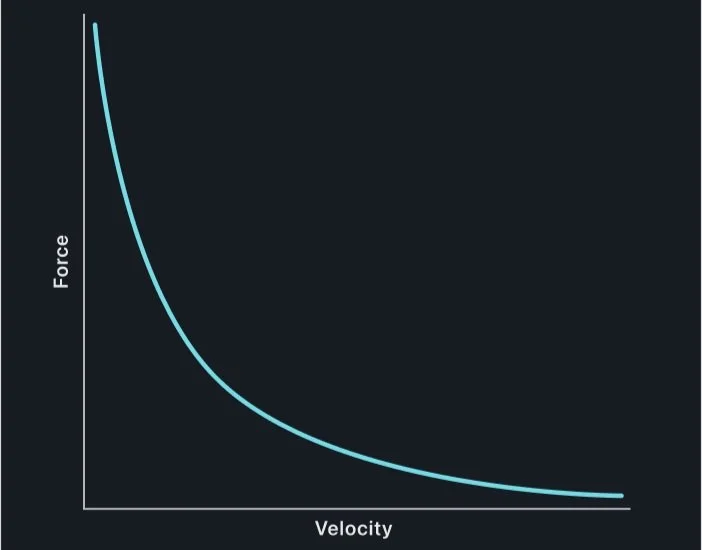Why Your Explosiveness Isn’t Improving—Even With Heavy Lifting
2-3 minute read
By Jason Lau
You’ve been lifting consistently. Your squat and deadlift numbers are up. But when it’s time to explode off the line, shoot for a takedown, or throw a fast combo—you still feel sluggish. This is a common disconnect in combat sports S&C. Strength is going up, but speed and explosiveness don’t follow. Here’s why that happens—and what to do instead.
Strength Is the Foundation—But It’s Not the Whole House
Improving your squat from 100kg to 140kg will likely make you more forceful. But once you’re strong enough to produce sufficient force, just getting stronger doesn't automatically make you faster or more explosive.
That’s because explosiveness isn't just about strength—it's about how fast you can apply that strength. This is known as rate of force development (RFD). Heavy lifting improves your peak force, but not necessarily how quickly you can apply it.
The Strength-Speed Mismatch
Fighters often operate in a strength-speed mismatch: they’re strong, but they can’t access that strength fast enough in real scenarios.
You might deadlift 180kg, but if you can't apply meaningful force in the 200–300 milliseconds it takes to throw a punch or shoot a double leg, that strength isn’t transferring.
Explosiveness = Force × Speed.
Without training the “speed” side of the equation, your force output stays trapped in the gym.
Learning the Force-Velocity Curve
Many assume that just moving heavy weights quickly is enough to train power. But speed against heavy resistance is still slow. That’s not the same as training explosiveness.
The force-velocity curve shows the relationship between how much force you can produce and how fast you can move. In simple terms: the heavier the weight (more force), the slower you move it (less velocity), and the lighter the weight, the faster you can move it. For strength and conditioning, this helps guide training—heavy lifts build max strength (high force, low speed), while fast, explosive movements like jumps or sprints build power and speed (lower force, high speed). Effective programs train across this curve depending on the athlete’s needs in their discipline.
Fighters might “lift explosively” with 80% of their 1RM, but the bar speed is still low. Movements like jump squats, medicine ball throws, or Olympic lift variations with lighter loads have much better transfer to the kind of explosive work seen in fighting.
Train Fast to Be Fast
To become more explosive, you need to train movements that:
Involve high velocities
Require rapid contraction and relaxation
Mimic the time constraints of your sport
This means integrating power-based movements into your program, such as:
Jumps: Box jumps, broad jumps, depth jumps, pogo hops
Throws: Med ball slams, rotational throws, chest passes
Olympic lifts (if coached well): Power cleans, push presses
Contrast training: Pairing heavy lifts with explosive movements (e.g., heavy squat + jump)
These don’t replace your strength work—they layer on top of it to help convert that raw strength into usable speed.
Strength, Then Speed, Then Specificity
Think of explosive development as a funnel:
→ Build General Strength: Lifting creates the force potential.
→ Train Power & RFD: Ballistics and jumps train fast force expression.
→ Apply to Sport: Pad work, striking drills, and sparring tie it into skill.
If you skip step two, strength won’t carry over cleanly to skill. And if you skip step three, your explosiveness stays in the gym.
Sample Add-On for Power Work
If you're already lifting 2–3x/week and training skills most days, here’s how to layer power in your current training:
Example 1 (Lower Body Power)
Depth Jumps – 3x3
Jump Squats @ 20% BW – 3x5
Example 2 (Upper Body Power)
Med Ball Rotational Slams – 3x5/side
Med Ball Chest Pass – 3x5
Push Press (light) – 3x3
Example 3 (Contrast Example)
Heavy Trap Bar Deadlift – 3x3
[Rest 3-5 minutes]
Paired with Broad Jumps – 3x3
You only need 15–20 minutes added onto your strength or skill days. It's not about doing more—it’s about doing the right kind of work.
Ending Notes
Lifting heavy is useful—but if you're not also training fast, you're leaving performance on the table. Don’t confuse strength for explosiveness. Build both, and make sure they’re working together.
The goal isn’t just to be strong. It's dangerous—fast, reactive, and hard to stop.
Need help turning your strength to speed? If you’ve already been lifting but still feel slow in the cage or on the mats, I’ll help you close that gap. Apply for online coaching and I’ll design a program that targets explosive strength that transfers to your sport—not just the weight room. Use the link before to book a FREE consultation call.


